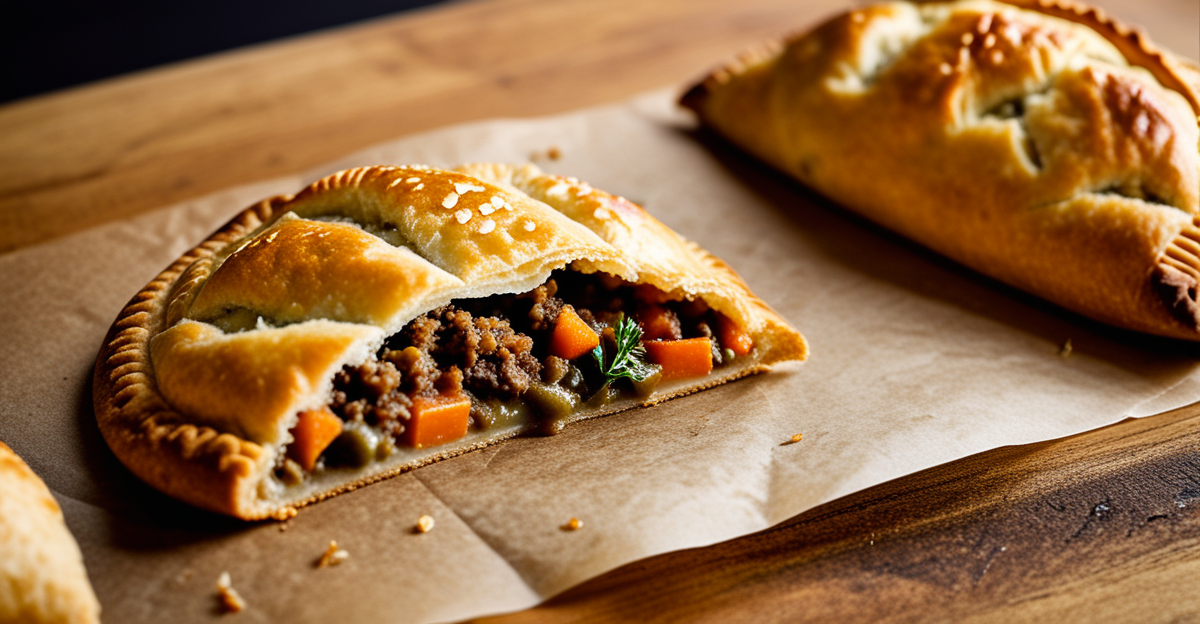Essential Components of a Vegetarian Cornish Pasty
Creating a vegetarian Cornish pasty requires careful selection of ingredients to mimic the traditional pasty while keeping it meat-free. Core vegetables such as potatoes, swede (rutabaga), onions, and carrots form the foundation, providing the hearty, rustic texture essential to this dish. To replace the meat component, popular meat alternatives include firm tofu, textured vegetable protein (TVP), or mushrooms, which add umami and a satisfying bite.
Seasoning plays a crucial role in preserving the authentic pasty flavour. Key herbs and spices often include black pepper, sea salt, thyme, and sometimes a pinch of nutmeg. These enhance the filling without overpowering the natural taste of the vegetables and meat substitutes.
Topic to read : How Can Traditional UK Cooking Methods Enhance Modern Dishes?
The pastry itself is another vital element. Traditional pasty dough comprises flour, butter, and water, but vegetarian options can also feature vegan margarine or plant-based fats to maintain flakiness and integrity during baking. Dough options must be firm enough to hold the filling but tender enough to enjoy—perfecting this balance is central to making a truly authentic vegetarian Cornish pasty.
Step-by-Step Recipe for Making Vegetarian Cornish Pasties
Learn how to make pasties with ease by starting with the filling. Begin by finely chopping core vegetables—potatoes, swede, onions, and carrots—ensuring uniform pieces for even cooking. Incorporate your chosen meat alternatives like mushrooms or firm tofu, which add texture and body. Season the mixture with classic herbs such as thyme, black pepper, and salt to echo the traditional pasty flavour.
Also read : What are the best herbs to use in traditional British cooking?
Next, focus on the dough. Roll the vegetarian pastry into circles about 20cm in diameter, maintaining a thickness that is pliable but strong enough to hold the filling. Place a generous amount of filling onto one half of the pastry circle, leaving space around the edges. Fold over and carefully seal the pastry by crimping the edges; this technique not only secures the filling but creates the iconic pasty shape.
Throughout preparation, keep the filling and pastry cool to facilitate handling and baking success. This method preserves the integrity of the vegetarian Cornish pasty ingredients, essential for authentic taste and texture.
Baking and Serving Suggestions
Mastering the baking vegetarian pasty process is essential to achieve the ideal golden crust and tender filling. Preheat the oven to around 200°C (392°F). This temperature ensures the pastry cooks evenly, allowing the vegetarian Cornish pasty ingredients inside to soften without becoming mushy. Baking typically takes 35–45 minutes; monitor carefully to avoid undercooked dough or burnt edges.
Check for doneness by looking for a crisp, golden-brown pastry that feels firm when gently pressed. A thin sliver near the seam can reveal if the veggies inside are tender. If needed, tent the pasties with foil during baking to prevent over-browning.
For serving, consider traditional accompaniments like simple salads or chutneys, which complement the savoury richness of the vegetarian filling. Warm or at room temperature, pasties are convenient for meals or snacks. The best ways to serve pasties emphasize maintaining the contrast between flaky pastry and hearty filling.
These tips ensure both flavour and texture shine, highlighting the quintessential appeal of the vegetarian Cornish pasty that respects the classic while embracing its plant-based twist.
Preserving Traditional Flavours and Authenticity
Capturing the authentic Cornish pasty taste in a vegetarian recipe requires deliberate seasoning choices. Classic herbs such as thyme and black pepper are essential to mimic the traditional pasty components’ robust, earthy flavour. Adding a touch of nutmeg introduces subtle warmth, rounding out the profile without overpowering the core vegetables and meat alternatives.
To replicate the texture of meat in a vegetarian pasty, combining firm mushrooms or tofu with root vegetables ensures a satisfying bite. These meat alternatives absorb seasoning well while maintaining a tender yet firm consistency after baking, closely mirroring traditional fillings.
Maintaining visual and textural authenticity also depends on the pastry. Use a pastry dough firm enough to hold the filling, but flaky to achieve the iconic pasty crust. Vegan fats can successfully replace butter without compromising flakiness, preserving the classic appeal.
In essence, thoughtful ingredient swaps and seasoning balance uphold the traditional flavour and texture hallmark of an authentic Cornish pasty, even without meat.
Nutritional Information and Dietary Considerations
Understanding vegetarian pasty nutrition is vital for those seeking healthier or specialized dietary options. Compared to traditional pasties, vegetarian Cornish pasty ingredients often lower saturated fat content by replacing meat with plant-based proteins like tofu or mushrooms. These meat alternatives also contribute valuable fibre and essential nutrients that support digestion and overall health.
For individuals with specific needs, creating vegan, gluten-free, or lower-fat versions is achievable by adjusting the pastry and filling. Using gluten-free flour or choosing oils instead of fats helps accommodate dietary restrictions without sacrificing texture or taste.
Protein sources in a vegetarian pasty largely depend on the chosen meat alternatives. Firm tofu and textured vegetable protein provide substantial protein, while root vegetables add fibre, aiding in satiety and nutrient absorption. Balancing these components ensures a fulfilling meal that meets nutritional goals.
This combination of ingredients not only respects tradition but aligns with modern health considerations, making the vegetarian Cornish pasty a versatile, nourishing choice for diverse diets.
Common Questions about Vegetarian Cornish Pasties
Curious if a vegetarian Cornish pasty really matches the traditional? The main concern often is authenticity and texture. Using meat alternatives like firm tofu or mushrooms helps replicate the hearty bite of meat. Combined with the core vegetables—potatoes, swede, and onions—these ingredients produce a filling that holds texture well after baking. The pastry, when made with vegan fats or butter, remains flaky and robust, preserving the classic pasty feel.
Wondering about storage or reheating? Vegetarian pasties can be refrigerated for up to 3 days safely. When freezing, wrap them tightly to avoid freezer burn; they’ll keep well for up to one month. To reheat, bake directly from frozen at 180°C for 25–30 minutes or until the pastry is warm and crisp again. Microwaving is less ideal as it softens the crust, compromising the signature flakiness.
For meal prep, preparing a batch of pasties ahead is simple and convenient. They freeze well and thaw evenly, making them a reliable option for quick, satisfying meals that retain traditional pasty taste and texture—even in vegetarian form.








